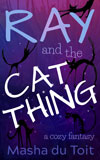Title: Birdwing
Author: Rafe Martin
Series : No, this is a stand alone book
Rating: 
Do you know the Grimm Brother’s fairy tale “The Six Swans”? That’s the one about the six brothers who were turned into swans, and how their sister undid the enchantment. At least – she almost succeeded. At the end, the youngest brother’s left arm remained a swan wing.
Birdwing is the story of what happens next, as Ardwin grows up and tries to make sense of his divided loyalties – his memories of the wild life of a swan, and his need for acceptance in the world of humans.
detail from Eleanor Abbot’s illustration
Rafe Martin asks if it is possible to live “happily ever after” when your family has been so spectacularly torn apart.
Ardwin and his family struggle to comes to terms with their history. They are far from healed and their past haunts them.
To recap the events of The Six Swans: Firstly, a jealous second wife turned her six step-sons into swans, and doomed her step-daughter, Rose, to a life of silent suffering if she ever hoped to free them. And as though that were not enough, when Rose eventually finds the possibility of happiness in a loving marriage – her mother in law not only steals her children from her, but convinces her husband to put Rose to death.
At the end of that fairy tale, Rose is proved innocent and her brother’s regain their human shape. And though that story had a happy ending, Rafe Martin reminds us that the scars cause would not heal so easily.
One of the reminders of their painful past is Ardwin, the youngest brother who regained his human shape in all but his left arm, which remained in the shape of a swan.
This is not a book you can read in a cynical frame of mind. The young hero Ardwin takes himself very seriously in true adolescent fashion, and the author takes him quite seriously as well. Rafe Martin spends a fair amount of time relishing the visual possibilities of a beautiful, strong, shy and unselfconscious young man with a swan’s wing. There is something very beguiling about the pairing of Ardwin’s masculinity, and the very wild and feminine nature of the wing.
The wing is a wonderful narrative device. On one level it functions as a symbol of awkward adolescence. The wing is an undeniable part of Ardwin’s difference. He loves it as part of himself, and yet hates it because it marks him as a “freak”. The wing is awkward and clumsy and responds uncontrollably in response to his anger and exitement.
Ardwin remembers a moment when he was looking at himself in a mirror:
“Staring into the fire, he recalled a time, not many years back when he had been standing in front of the mirror in his chambers. His tunic was off and he found himself staring at the place where the feathers ended and smooth skin began. It was very high up on the arm, just below the shoulder. Then he had lifted his dagger and, without drawing blood, had marked the almost invisible boundary between human and the bird. He imagined cutting off the wing.”
This reminds me of that scene from the last X-men movie in which the angelic boy attempts to file off his wings out of guilt at his own difference.
The wing also has another significance, a theme which is at the core of this story – the difference between rational human and wild nature. The wing links Ardwin to the old, wild and natural magic of the past. It allows him entrance to the world of animals – through the wing, he can understand the speech of beasts and birds. But it is also a reminder of the impossibility of him ever returning to the wild life he knew when he was a swan.
There is a strong theme here, exploring the place of evil in the natural world. Was the Witch evil, or simply part of a system that does not fit in with human morality? Here an old walrus attempts to explain to Ardwin that his romanticised view of nature is far from the truth:
“Now listen, matey, if you’ve come here to experience the beauty and harmony of nature, you’ve come to the wrong place. Wait! No need to go running off. Maybe there is no right place. Nature, your nature and mine, is everywhere. But it’s an awful mess. The harmony is shot through with lots of muck and blood. My advice? Open your eyes wide, and keep ’em that way. That’s how you want to see the world – truthfully! Right?”
This makes me think of a post I wrote about Princess Mononoke, particularly about the depiction of the Deer God. He was being of renewal and spring, as well as of decay and death. The two are inseparable.
Although there was much I enjoyed in this book, there are also some rather awkward passages. Especially towards the end of the book, as the author starts having to tie off the many threads he has been spinning. I got the feeling that he did not always know how to gracefully end off all the wild stories he had started. Some things were just dealt with too neatly and rather unbelievably. But even so, this is a lyrical and unusual book, and one that I will certainly want to read again.
If you found this interesting, you might also like to read:
- Princess Mononoke
- The Magicians of Caprona – a review of a book by Diana Wynne Jones
- The circle of death and life illustrated by Spirin












1 Comment (+add yours?)